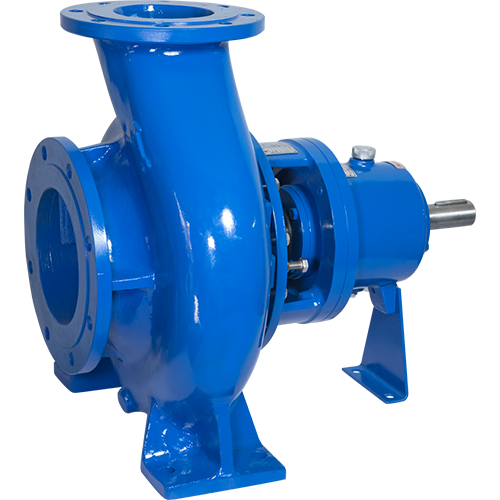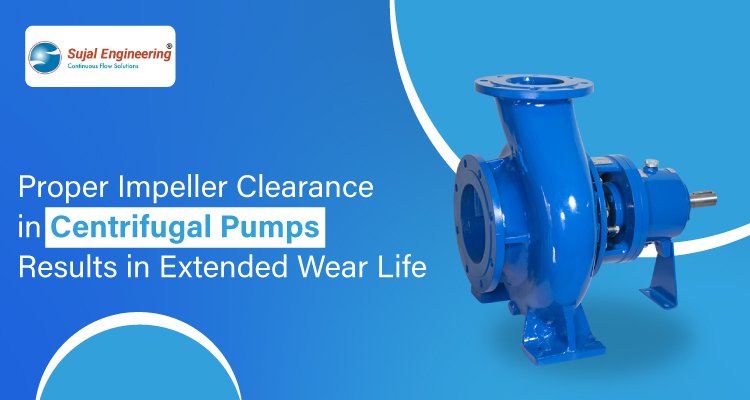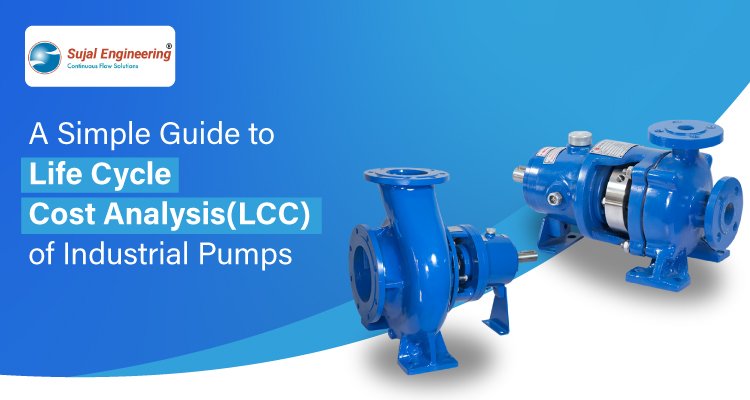All About End Suction Pump – Efficient & Robust

If you’re looking for a perfect solution for fluid transfer, you should consider an end suction pump for your needs.
End suction pumps are well-capable and can manage a wide range of fluid types, which is primarily why they’re so popular in almost all industries.
The best part? — End suction pumps have become pretty affordable for small, medium, and large businesses.
If you’re planning to invest in an end suction pump, it is important to know all about it.
In this post, we have shared everything there is to know about end suction pumps so that you can make a well-informed decision.
What is an End Suction Pump?
An end suction pump is basically a type of centrifugal pump that comes with one impeller, a fluid inlet at the side face, and a fluid outlet at the top.
The fluid that is pumped will gradually increase velocity as it begins passing through the impeller. The built-in diffuser, on the other hand, converts the high velocity into high pressure before relieving the fluid from the top of the end suction pump.
The kind of end suction pumps can be used in several ways depending on certain situations. A few examples include air motors, electric motors, steam turbines, and gasoline motors.
The first ever machine that was built similar to an end suction pump was a mud lifting device in 1475. After that, the first generation of centrifugal pumps was designed in the late 17th century. These pumps were mostly used with straight impeller vanes.
Later, the impeller vain design was converted from straight to curved, which is still commonly used even today.
More importantly, there are now main two different types of end suction pumps available in the market.
If you’re considering to purchase an end suction pump, it is critical to understand the difference between their types.
Different Types of End Suction Pumps
As we just mentioned, there are two main types of end suction pumps that are commonly available in the market today.
Bracket Type Center Outlet End Suction Pump
These types of end suction pumps have feet at the bottom of the pump casing, while the fluid outlet and shaft centerline coincide. These pumps are primarily used for water withdrawals as well as in various industries.
In a nutshell, bracket-type center outlet end suction pumps are beneficial for small to medium fluid flow rates, open systems, or places where the inlet fluid pressure is low.
Stand Tangential Outlet End Suction Pump
Bracket-type center outlet end suction pumps usually face the heating issue from the bottom of the pump casing legs when the outlet center line and shaft center line do not coincide.
Furthermore, as the heating industry is growing at a rapid pace, the issues caused by the original centerline outlet end suction pumps are becoming increasingly evident. This mainly includes efficiency, casting, and vibration.
On top of this, the evolving industrial development, and the volume of liquid transferred continues to grow, causing the same problem.
Stand tangential outlet end suction pumps, on the other hand, are mostly grounded and are fixed directly on the cement base, which allows the bottom of the end suction pump casing to bear part of the vibration.
In addition, this type of end suction pump also has a gentle P-Q performance curve, which is mainly suitable for enormous flow, directly fixing the cement foundation where the pump casing will be bearing part of the downward force environment.
Advantages of End Suction Pumps
Now that you know the key differences between different types of end suction pumps, Let’s take a look at their main advantages.
The primary advantage of investing in end suction pumps is their low initial cost for most circumstances. This is very lucrative for business owners, especially because end suction pumps are fairly efficient at their tasks.
Furthermore, the design of end suction pumps does not involve any valves, is comprised of only a couple of moving parts, and requires minimal space.
From the operation standpoint, the motor of the pump turns the impeller, which moves fluid from the source to the destination, with minimal maintenance. This is quite helpful for businesses that largely depend upon the reliability of the pump to keep their operations moving.
However, end suction pumps aren’t necessarily the best equipment for every application. And just as advantages, there are disadvantages of end suction pumps as well.
Disadvantages of End Suction Pumps
It is equally important to learn about the disadvantages of end suction pumps as it is to know their advantages.
That said, one of the primary disadvantages of end suction pumps is that it relies solely on the rotation of the impeller to move the water and other fluids. And for the impeller to rotate, it is necessary to prime the pump properly before use.
An end suction pump is generally primed by filling it completely with water or other fluids you want to move before bringing it to the standard operating speed.
If the pump is inadequately primed and you bring it to the standard operating speed, it will result in cavitation. For the uninitiated, cavitation occurs when air finds its way into the mix. This causes the moving fluid to form vapor bubbles. And the bubble bursting eventually causes cavitation, allowing corrosion and casing to take place.
Ideally, you should know about all applications of end suction pumps to determine if investing in an end suction pump is a wise decision for you.
Applications of End Suction Pumps
As we mentioned earlier, end suction pumps can be used for a variety of applications and are extremely popular in almost every industry that requires fluid transfer for operations.
Below are the primary applications of an end suction pump that you should be aware of.
- Refrigeration
- Irrigation
- HVAC
- Plumbing
- Fire fighting
- Water supply
- Sprinklers
- Cooling towers
- Oil & Gas industry
- Chemical processing plants
On top of this, end suction pumps can easily manage most types of fluids such as water at different temperatures, corrosive chemicals, viscous oils, abrasive fluids, and much more.
Conclusion
So this is everything there is to know about end suction pumps. Depending on your requirements and fluid type as well as other circumstances, investing in an end suction pump may be the right decision for you.
If you’re looking to invest in an end suction pump but are unable to find a reliable manufacturer, contact Sujal Pumps.
Sujal is a leading manufacturer of different varieties of end suction and other types of industrial pumps.
Please visit our website for more information on our wide range of pumps.
Read More:
Rotary Gear Pumps – For High Viscosity Fluid Applications
Chemical Pumps for Petrochemical Applications – A Definitive Guide





